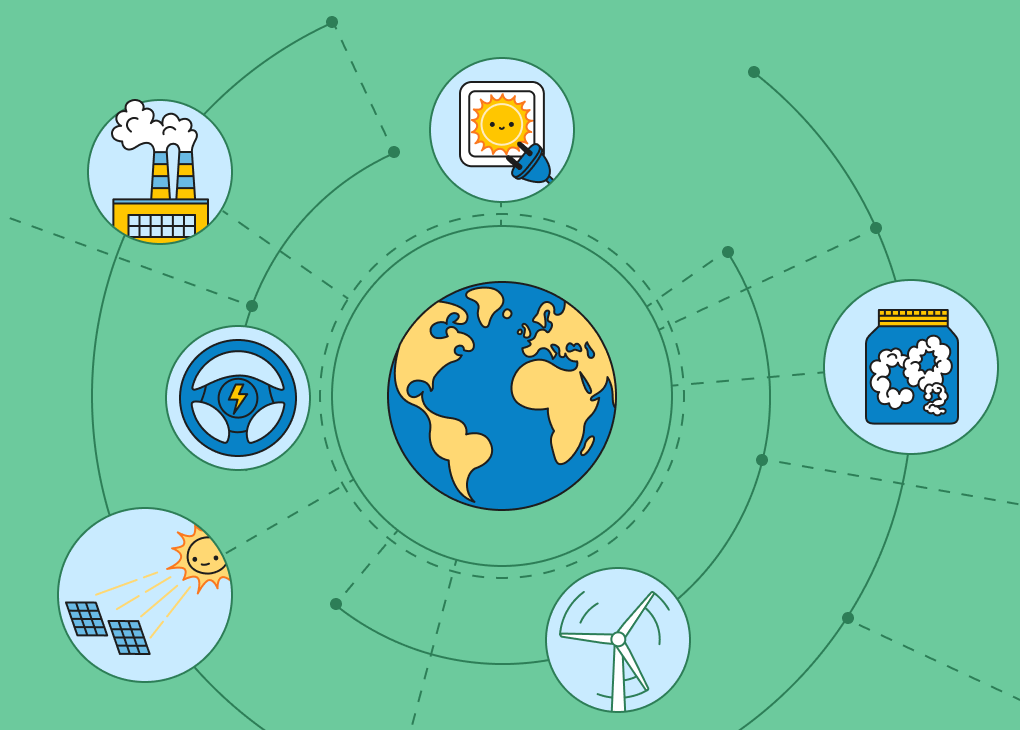As the global climate crisis deepens, a new wave of innovation is rising—one powered not just by renewable energy or greener materials, but by data and artificial intelligence. The urgency to decarbonize our planet has turned the spotlight toward technologies that can adapt quickly, optimize endlessly, and scale efficiently. At the heart of this transformation lies a powerful synergy between climate data and AI—a pairing that’s redefining what’s possible in cleantech.
From smarter energy systems to predictive models for environmental impact, the fusion of data-driven insights and machine learning is accelerating how we design, deploy, and improve sustainable technologies. This isn’t just about making clean energy more accessible—it’s about making the entire infrastructure of sustainability intelligent, responsive, and globally scalable.
The Role of Climate Data in Cleantech
The success of any cleantech solution depends heavily on understanding the environmental context in which it operates. That’s where climate data comes in. Collected through satellites, IoT devices, weather stations, and increasingly sophisticated sensors, climate data offers a real-time, granular view of how the planet is changing.
This data isn’t just useful for scientists. It has become essential for developers, investors, and operators working on everything from solar grid management to sustainable agriculture. By analyzing historical and current weather patterns, emission levels, temperature shifts, sea-level trends, and biodiversity markers, companies can make smarter decisions about where to deploy resources—and how to future-proof their technologies.
The sheer volume of data being collected every day is staggering. But data alone is not enough. What’s needed is the ability to translate that data into actionable intelligence. That’s where AI steps in.
How AI Makes Climate Intelligence Actionable
Artificial intelligence thrives on complexity. Its algorithms can detect patterns that would take human analysts months—or even years—to uncover. When applied to climate data, AI can spot hidden inefficiencies, predict environmental risks, and optimize performance in real time.
In the renewable energy sector, for example, AI helps manage fluctuating energy supply from solar and wind by forecasting output based on weather conditions. This allows energy providers to balance supply and demand more effectively and reduce reliance on fossil-fuel backups. In urban planning, AI-driven simulations can help model how different policies will affect carbon emissions or air quality over the next decade.
Agriculture is another major frontier. With climate change disrupting traditional growing patterns, AI can analyze satellite imagery and sensor data to advise farmers on when to plant, water, or harvest—helping to improve yields while conserving water and reducing chemical use.
These are just glimpses into how climate data and AI are converging to shape a smarter and more sustainable world. And while each application has its own complexity, they all rely on the same foundational idea: real-world insights, powered by advanced analytics, driving real-world impact.
Unlocking Markets with Climate Intelligence
The intersection of climate data and AI isn’t just a technological shift—it’s a commercial one. Investors and businesses are recognizing that climate intelligence is a differentiator. It’s becoming central to how companies assess risk, identify opportunity, and navigate regulation in a carbon-constrained economy.
Financial institutions are using climate risk models to evaluate the resilience of assets and portfolios. Insurers are applying AI to climate data to underwrite policies more accurately in regions prone to extreme weather events. Even fashion and retail brands are turning to predictive environmental analytics to forecast raw material availability and consumer trends in a warming world.
In this evolving ecosystem, those with access to structured, high-quality environmental data—and the AI tools to analyze it—are gaining a significant edge. Platforms offering specialized insights are becoming key players in the emerging climate tech market, helping businesses and governments alike understand how climate change will affect everything from supply chains to investment strategies.
This demand for intelligence is also driving collaboration between data providers, AI developers, and industry leaders. As more sectors realize the importance of environmental foresight, cleantech innovation is expanding from isolated products to integrated systems, embedded with climate awareness from the ground up.
The Shift Toward Predictive Sustainability
What makes AI and climate data especially powerful together is their forward-looking nature. Unlike traditional sustainability efforts that focus on mitigating past damage, these tools allow us to anticipate and prevent future harm. This shift toward predictive sustainability is shaping a new mindset across industries—one that prioritizes resilience and responsiveness over reaction and recovery.
For example, smart buildings are being equipped with AI systems that adjust energy usage not only based on occupancy but also in anticipation of local weather shifts. Coastal cities are using climate modeling to predict flood zones decades in advance and redesign infrastructure accordingly. Agricultural businesses are leveraging AI to model how climate stress will affect their crop portfolios years from now—and adapting their strategies today.
These approaches don’t just offer environmental benefits—they also protect business continuity, reduce costs, and improve long-term ROI. In a world where climate risk is now financial risk, being able to see what’s coming and prepare for it is more than just good science. It’s smart business.
The Road Ahead
As we look to the future, the role of AI and climate data in cleantech innovation will only continue to grow. The challenges we face—rising temperatures, shifting ecosystems, extreme weather—are evolving faster than many legacy systems can handle. But with the right tools, we don’t have to just adapt. We can lead.
The integration of AI into climate tech means we’re no longer limited by trial-and-error engineering. We can now simulate, test, and optimize before we even deploy. This cuts down on waste, improves efficiency, and accelerates the scaling of sustainable solutions.
Of course, the ethical and governance aspects of using AI in such critical areas must also evolve. Ensuring transparency, avoiding algorithmic bias, and maintaining data integrity are all essential. But with thoughtful development and inclusive collaboration, AI has the potential to become one of the most effective tools we have in combating climate change.
In this new era, innovation isn’t just about inventing something new—it’s about building systems that understand, predict, and respond to the world around them. That’s what makes climate intelligence so transformative. It doesn’t just help us survive. It helps us design a cleaner, smarter, and more resilient future.





























